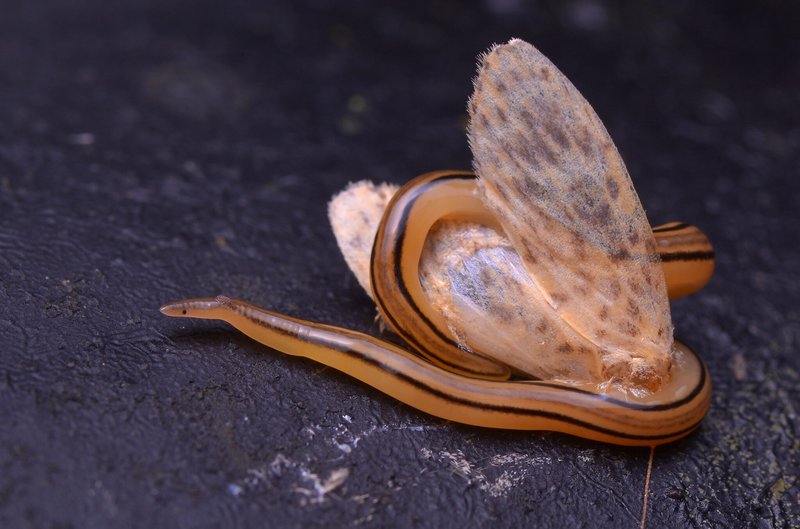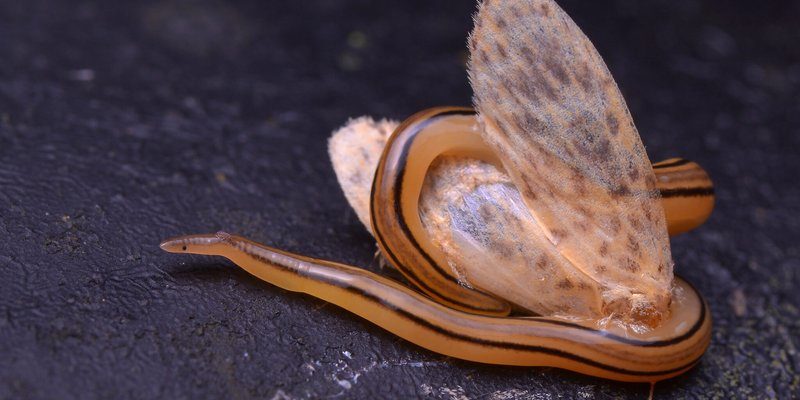
If you’re curious about how these creatures snag their meals, you’re in for a treat. I’m here to dive into the documented feeding techniques of ribbon worms, breaking down how they catch their food and the incredible adaptations they use. It’s a bit like peeling back the layers of a mystery novel, revealing the secrets of their survival. So grab your coffee, and let’s explore the often-overlooked world of ribbon worms!
What Are Ribbon Worms?
Before we delve into their feeding techniques, let’s get to know ribbon worms a bit better. These fascinating creatures can be found in marine environments all over the world. They come in various colors and sizes, with some measuring just a few centimeters, while others stretch out over a meter long. Imagine them as the long, flexible spaghetti of the ocean—graceful and surprisingly complex.
One of the standout features of ribbon worms is their unique body structure. They have a soft, elongated body that often appears flat. This shape allows them to navigate through sediments and crevices, making it easier to hunt and hide from predators. Ribbon worms are equipped with specialized structures, like *proboscis*, which play a crucial role in their feeding methods.
But what’s the deal with their feeding techniques? Let’s break that down.
Active Hunting vs. Passive Feeding
When it comes to feeding, ribbon worms use two primary methods: active hunting and passive feeding. These techniques can be compared to two different styles of fishing—one where you’re casting a line and waiting for a bite, and another where you’re stalking your prey.
Active Hunting Techniques
Active hunters are the ribbon worms that go after their prey, using speed and agility to capture meals. They deploy their *proboscis*—a sort of retractable feeding tube—to snatch unsuspecting prey. Here’s how it works:
- Launching the Proboscis: When a ribbon worm detects potential prey, it can extend its proboscis rapidly. This tube can be over a meter long and is covered in sticky mucus and barbed structures that help grab onto prey.
- Ensnaring Prey: Once the proboscis makes contact, it wraps around the prey, immobilizing it. This technique is particularly useful for catching small fish, crustaceans, and even other worms.
- Consuming the Meal: After ensnaring its catch, the ribbon worm pulls the prey back towards its mouth and begins the process of digestion.
So, if you’ve ever seen a ribbon worm in action, you might liken it to watching an expert angler reeling in a big catch—swift, smooth, and surprisingly effective.
Passive Feeding Techniques
On the other hand, some ribbon worms are more laid-back in their approach. These creatures rely on passive feeding strategies, often waiting for prey to come to them. Here’s what that looks like:
- Burrowing into Sediments: Some ribbon worms will bury themselves in ocean floor sediments, exposing only their proboscis. This way, they can snag prey that blunders too close.
- Using Camouflage: By blending into their surroundings, ribbon worms can remain undetected, making it easier to grab small organisms that swim by or settle close to them.
You might think of passive feeding as a more leisurely brunch—waiting for the right moment, rather than actively hunting down a meal.
The Role of Secretion in Feeding
A key aspect of ribbon worm feeding techniques involves their *secretions*. These substances are more than just goo—they play a critical role in how ribbon worms capture and consume their food.
Mucus and Enzymes
When ribbon worms extend their proboscis, they often coat it with a special mucus. This secretion makes it sticky, helping to catch prey more effectively. But that’s just the beginning. The mucus also contains enzymes that start breaking down the prey’s tissues, making it easier for the ribbon worm to digest its meal.
Think of it like pre-seasoning your food before cooking—getting a jumpstart on the flavors!
Defensive Secretions
The secretions don’t just help in catching food; they can also protect ribbon worms from potential threats. Some species can release toxic or unpalatable substances when threatened, deterring predators. This dual function of secretions—feeding and defense—highlights how adaptable ribbon worms are in their environments.
Adaptations to Different Environments
Ribbon worms are found in a variety of marine habitats, from tidal pools to deep-sea environments. Their feeding techniques and adaptations can vary based on where they live and what they need to adapt to for survival.
Coastal Regions
In coastal environments, ribbon worms often encounter plenty of active prey, such as small fish and crustaceans. As a result, they’ve developed effective active hunting techniques. Here, you’ll find species that are exceptional at quickly extending their proboscis to catch prey zipping by.
Deep-Sea Locations
In deeper waters, where food might be scarce, some ribbon worms rely more on passive feeding. They often spend more time buried in sediments, waiting patiently for food to come their way. This strategy minimizes energy expenditure in an environment where hunting all day might not yield as many rewards.
Feeding and Ecosystem Dynamics
Ribbon worms play a significant role in their ecosystems, and their feeding techniques contribute to the balance of marine life. By preying on smaller organisms, they help control populations and contribute to nutrient cycling.
Predator and Prey Relationships
The interactions between ribbon worms and their prey can be dynamic. For example, when ribbon worms feast on a particular species, they can inadvertently allow other organisms to flourish. This creates a more balanced ecosystem, which is essential for maintaining marine biodiversity.
Continue Learning About Marine Life
Understanding ribbon worm feeding techniques offers a window into the complex relationships in marine ecosystems. If you’re passionate about marine biology or just curious about ocean life, there’s always something new to explore.
Ribbon worms might not be as famous as dolphins or clownfish, but their feeding techniques paint a fascinating picture of life underwater. Whether actively hunting with their amazing proboscis or waiting patiently for food to come their way, these creatures showcase nature’s creativity in survival.
By understanding how ribbon worms feed and adapt, we gain a deeper appreciation for the intricate web of life in our oceans. So the next time you think about marine life, consider the ribbon worm—a master of both stealth and agility, quietly going about its business beneath the waves.

